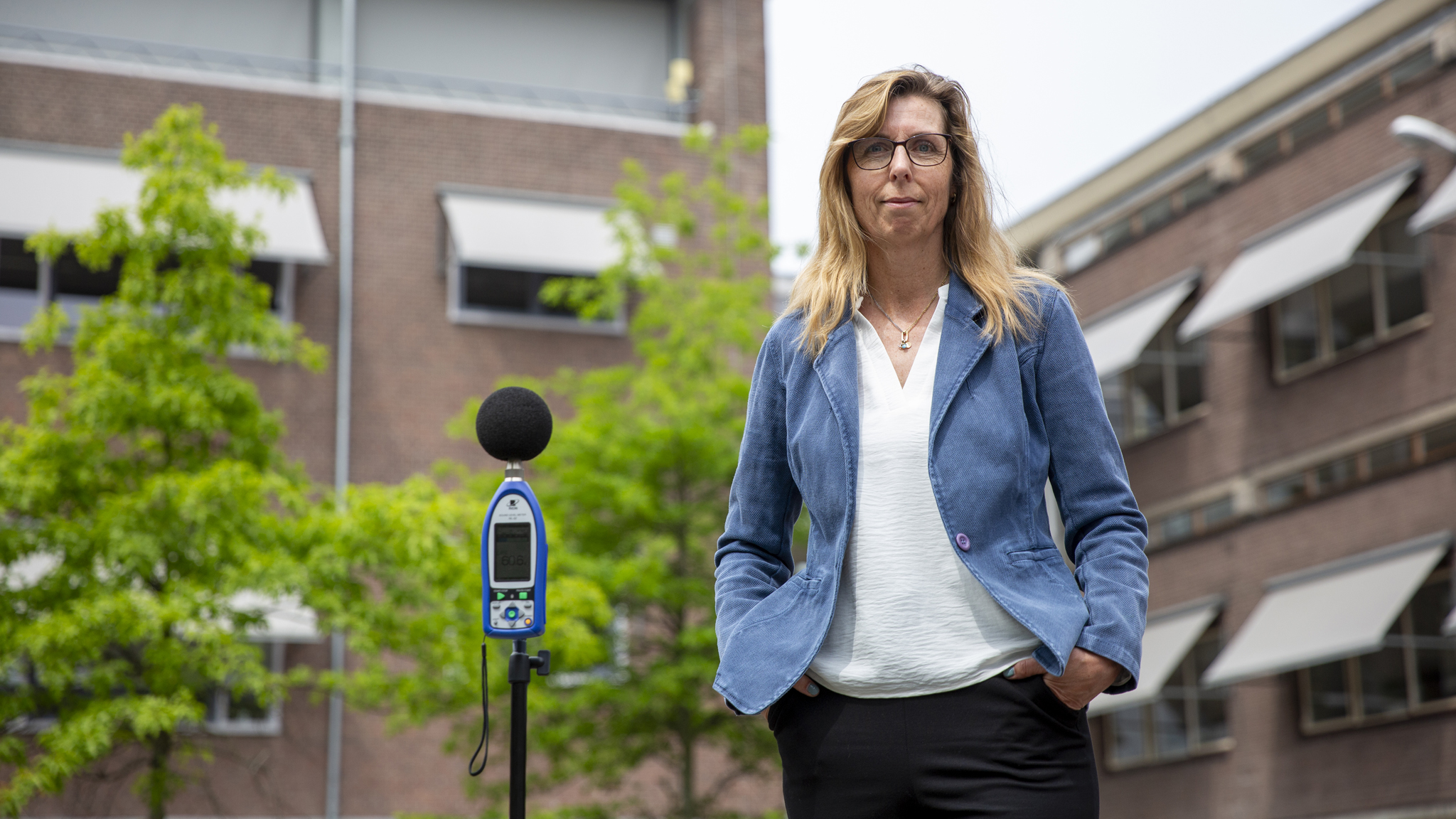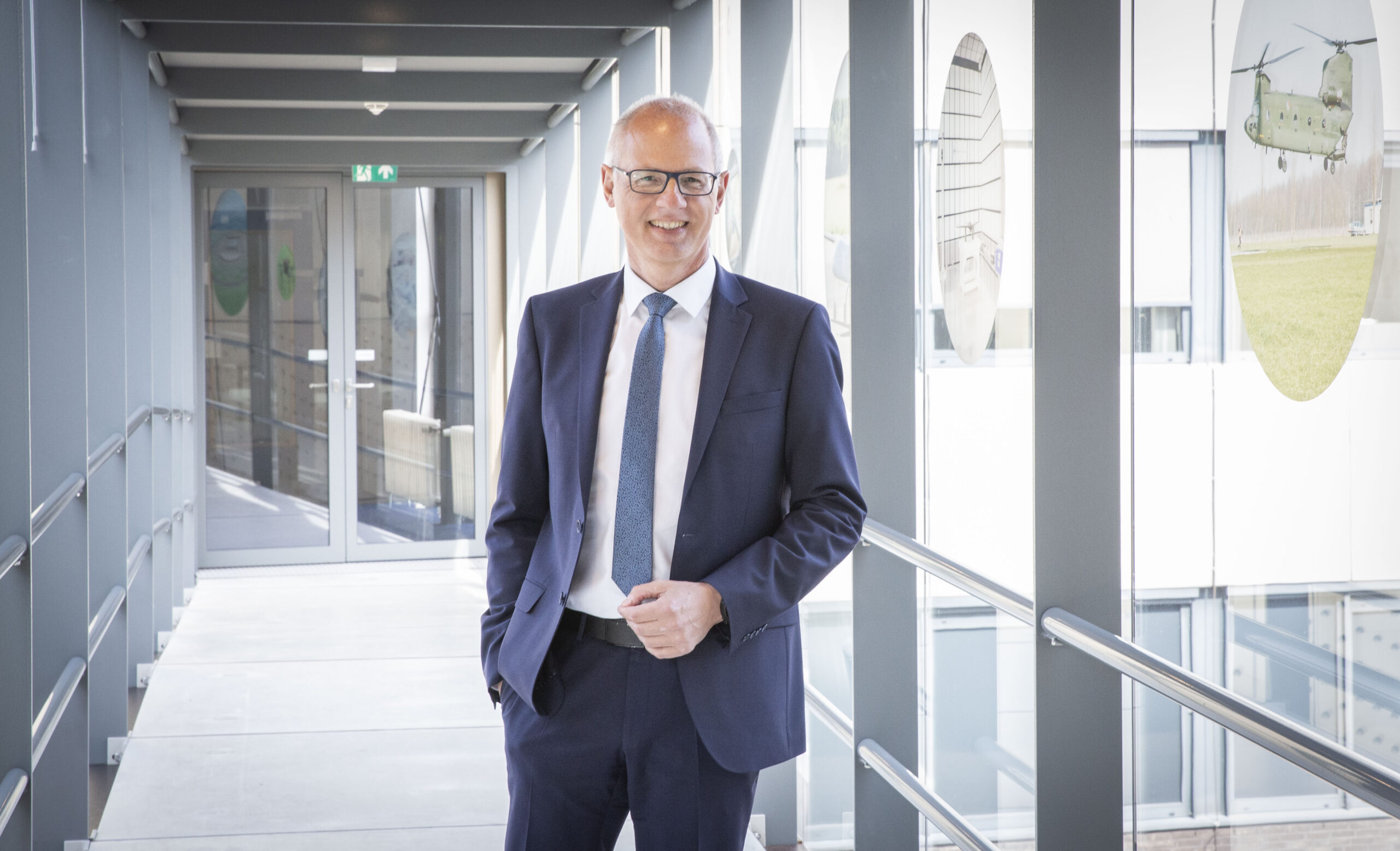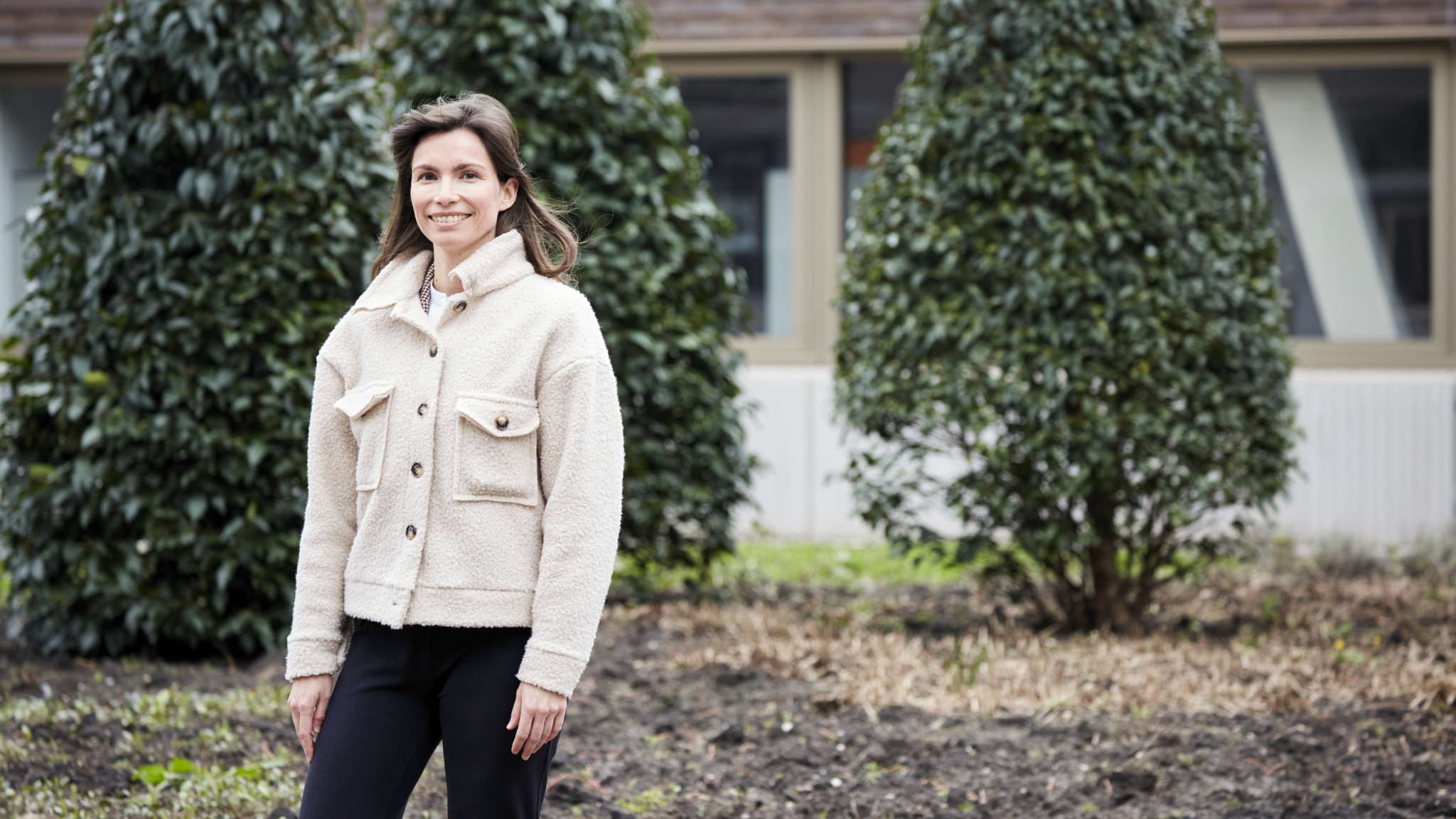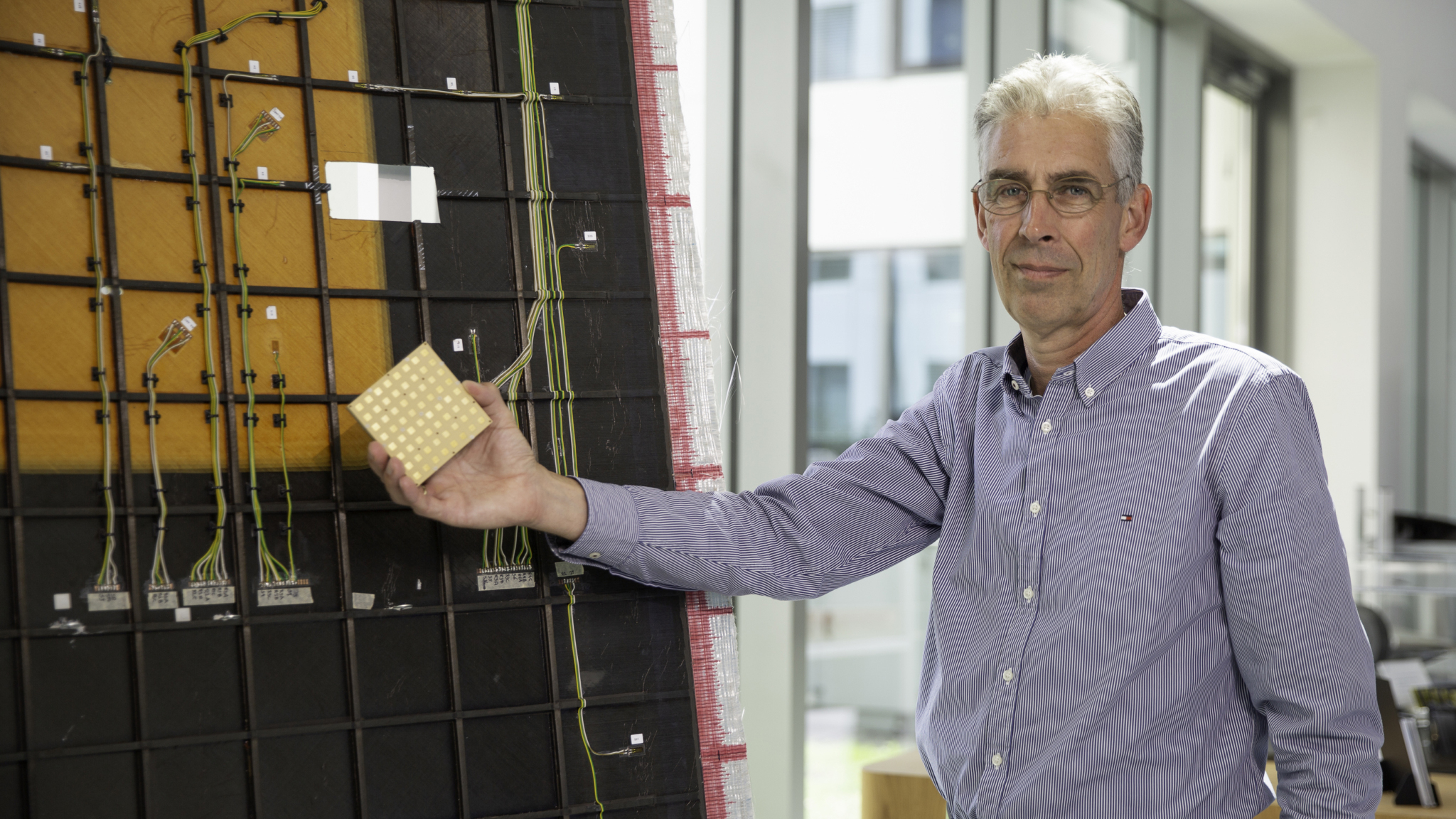Met data geluidshinder in kaart brengen
Wanneer Ellen van Leeuwen op 21-jarige leeftijd als data-analist terechtkomt op de afdeling duurzaamheid en milieu bij het Koninklijk Nederlandse Lucht- en Ruimtevaartcentrum (NLR) is ze, samen met de secretaresse, de enige vrouw op de afdeling. Ruim dertig jaar later werkt ze er nog; inmiddels als principal engineer en omringd door steeds meer vrouwen. “Gelukkig maar”, vindt de projectingenieur. “Het is goed dat er meer diversiteit komt binnen NLR, ik vind het heel mooi om die ontwikkeling gade te slaan.”
Het middelpunt van de aandacht
In Ellens lichting van de opleiding vliegtuigbouwkunde in Haarlem zijn 5 van de 125 studenten vrouw. Het voelt alsof alle ogen op haar gericht zijn, terwijl ze niet graag in het middelpunt van de belangstelling staat. Achteraf gezien heeft deze periode haar gevormd tot wie ze nu is. “Als ik een keer niet in de les was, of een slecht cijfer haalde, wist iedereen dat. Ik leerde heel snel dat het geen doen was om me de hele tijd af te vragen wat iedereen van me dacht. Dat heb ik in die tijd echt van me af leren zetten. Ondanks dat het niet altijd makkelijk was, heeft het me dus ook echt iets gebracht.”
“Het voelde alsof alles op z’n plek viel. Ik vond het meteen leuk”
De luchtvloot van Defensie operationeel houden
Ellen werkt op de afdeling Duurzaamheid en Milieu met een vaste groep collega’s aan defensieprojecten. De vloot van de Koninklijke Luchtmacht bestaat uit jacht-, les- en transportvliegtuigen en gevechts- en transporthelikopters. Om deze vloot gebruiksklaar te houden, moeten er operationele vluchten gemaakt worden. Dat gebeurt vanaf zeven luchthavens in Nederland, voor welke geluidszones zijn opgesteld rondom de start- en landingsbanen. Het team brengt milieueffecten van de luchtmacht in kaart en berekent of Defensie zich houdt aan de geluidszoneringen. Naast geluid worden ook externe veiligheid, emissie, luchtkwaliteit en stikstofdepositie meegenomen in de berekeningen.
Zo deed NLR onlangs Rattle-noise (rammelend geluid) -metingen bij drie verschillende woningen in de omgeving van vliegbasis Gilze-Rijen, waar Defensie vliegt met een chinook helikopter. “Ik vind het een prachtig geluid, maar omwonenden denken daar anders over, bij hen trillen de kopjes en schoteltjes in de kast. We hebben de helikopter verschillende overvluchten over meerdere woningen laten maken en per woning inzichtelijk gemaakt vanaf welk geluidsniveau er sprake is van rattle.”
Geluidsbelasting
De ingenieur komt voor het eerst met geluidsbelasting in aanraking tijdens een stage. Wanneer een uitzendbureau haar daarna een opdracht voorlegt voor een onderzoek naar geluidsbelasting rondom Schiphol bij NLR, hoeft ze niet lang na te denken. Het voelde alsof alles op z’n plek viel. “Ik vond het meteen leuk om te doen. Je verzamelt zoveel mogelijk gegevens, stopt dat in een model en het eindresultaat is een rapport wat de opdrachtgever helpt zich aan de geluidsnormen en -regels te houden.” Haar oorspronkelijke plan is om na een jaar verder te studeren, maar zover is het nooit gekomen: 32 jaar later werkt ze nog steeds bij het onderzoeksinstituut.
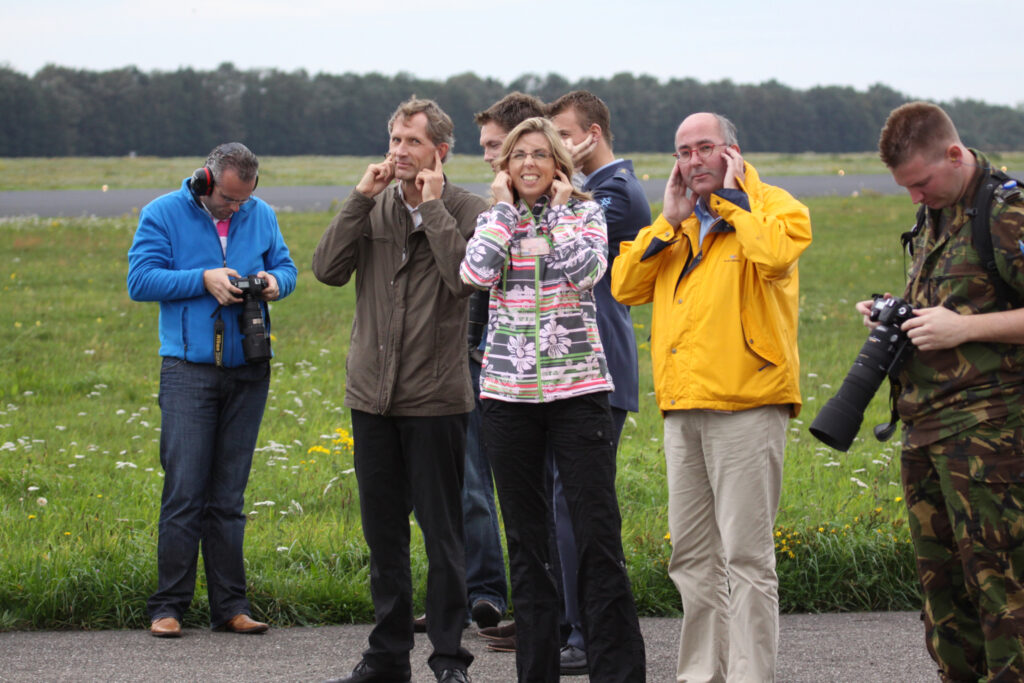
Dat Ellen in haar nieuwe functie – in maart is ze benoemd tot engineer principal – meer generalistisch bezig is, vindt ze leuk, al moet het soms ook nog wennen. “Het is nu vooral vergaderen, lezen en stukken schrijven. Ik vind het nog steeds heerlijk om de diepte in te gaan en alle cijfers en data te koppelen en in te voeren in een model. Al heb ik er eigenlijk geen meer tijd voor, soms trek ik dat soort taken toch nog naar me toe.”
Onlangs nog deed ze dat, toen NLR als opdracht kreeg om door te rekenen of de luchtbasis in Volkel extra vluchten kon accommoderen qua geluid. “Wij hebben een tool ontwikkeld waarmee Defensie vooraf zelf kan berekenen of ze binnen de afspraken vliegen. Toen in april 2023 de vliegbasis in Leeuwarden tijdelijk dicht moest vanwege groot onderhoud, werd de vloot F35’s tijdelijk in Volkel gestationeerd. Wij hebben de vluchten van die F35’s in het managementtool gezet en allerlei scenario’s doorgerekend. Ze kunnen de situatie met behulp van deze tool nu zelf bijhouden.”
Militaire luchtvaart
Geluid en uitstoot zijn twee onderwerpen die de afgelopen jaren volop in de spotlight staan, ook de militaire luchtvaart wordt daarbij niet gespaard. Ellen vindt dat er soms wel heel snel met de vinger naar Defensie wordt gewezen. “Ze vliegen zoveel nodig is om getraind en operationeel te zijn, daar gaan heel veel planningen en berekeningen aan vooraf. Bovendien hebben we de luchtmacht óók gewoon nodig, dat geluid mis ik soms in het publieke debat.”
Het vinden van een balans tussen werk en privé is iets wat Ellen haar hele carrière al lastig vindt. “In mijn nieuwe functie heb ik het alleen maar drukker gekregen, maar het geeft tegelijkertijd ook veel voldoening. Dat ik kan bijdragen aan het feit dat Defensie haar werk – binnen de regels en eisen die we als maatschappij hebben opgesteld – goed kan uitvoeren, vind ik heel waardevol.”
